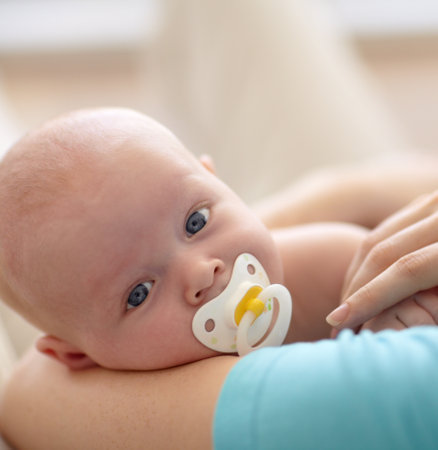1. Understanding Car Seat Safety Standards
Ensuring your babys safety while traveling starts with understanding car seat safety standards. In the U.S., car seats must meet strict federal regulations to provide the best protection for infants and toddlers. Knowing these guidelines will help you make an informed decision when choosing the right car seat.
Latest U.S. Car Seat Safety Regulations
The National Highway Traffic Safety Administration (NHTSA) and the American Academy of Pediatrics (AAP) provide guidelines to ensure maximum safety for children in vehicles. Some key regulations include:
- Rear-Facing Seats: Recommended for infants and toddlers up to at least age 2, or until they reach the maximum height and weight limits set by the manufacturer.
- Forward-Facing Seats: Used once a child outgrows their rear-facing seat, typically around age 2-4, with a five-point harness for added security.
- Booster Seats: Necessary for older children who have outgrown their forward-facing seat but are not yet tall enough for a seat belt alone (usually up to age 8-12).
- Expiration Dates: Car seats have expiration dates, usually around 6-10 years from the manufacture date, to ensure materials remain effective in protecting your child.
Crash Test Ratings: What They Mean
NHTSA conducts rigorous crash tests on car seats to evaluate their effectiveness. Ratings are based on ease of use, crash protection, and installation features. Here’s how ratings work:
| NHTSA Rating | Description |
|---|---|
| 5 Stars | Excellent safety and ease of use |
| 4 Stars | Above-average performance with minor concerns |
| 3 Stars | Adequate safety but could be improved |
| 2 Stars | Poor ease of use or potential safety issues |
| 1 Star | Significant concerns regarding usability or safety |
Key Features to Look for in a Safe Car Seat
Selecting a car seat involves checking specific features that enhance safety and ease of use. Consider these important factors:
- LATCH System: Ensures secure attachment without using seat belts.
- Side-Impact Protection: Extra padding and reinforced sides absorb energy during a collision.
- No-Rethread Harness: Allows easy adjustments as your baby grows without rethreading straps.
- EPP or EPS Foam: Energy-absorbing foam enhances crash protection.
- User-Friendly Installation: Clear instructions and level indicators help ensure correct installation.
Types of Car Seats and Which One Your Baby Needs
Choosing the right car seat for your baby can feel overwhelming, but understanding the different types available can make the decision much easier. The best car seat for your child depends on their age, weight, height, and how long you want to use it. Below, we break down the three main types of car seats: infant car seats, convertible car seats, and all-in-one options.
Infant Car Seats
Infant car seats are designed specifically for newborns and younger babies. They are rear-facing only and provide the best support for a babys head, neck, and spine. These seats typically come with a detachable base that stays in the car, allowing you to easily click the seat in and out.
Pros:
- Easy to carry and transfer between the car and stroller.
- Provides a snug fit for newborns with extra padding.
- Base stays installed in the car for convenience.
Cons:
- Babies outgrow them quickly (usually by 12-18 months).
- You will need to buy another seat as your baby grows.
Convertible Car Seats
A convertible car seat can be used both rear-facing for infants and forward-facing as your child grows. This makes it a cost-effective option since it lasts longer than an infant seat.
Pros:
- Saves money by transitioning from infant to toddler stages.
- Can accommodate children up to 40-50 lbs in rear-facing mode.
- No need to buy a new seat when your baby outgrows the infant stage.
Cons:
- Bigger and heavier than infant car seats—less portable.
- Lacks the convenience of a detachable carrier.
All-in-One Car Seats
If youre looking for a single purchase that will last throughout your childs entire car seat journey, an all-in-one seat might be the best choice. These seats transition from rear-facing infant mode to forward-facing toddler mode and eventually into a booster seat.
Pros:
- A one-time investment that lasts through multiple growth stages.
- No need to buy separate seats as your child grows.
- Makes transitions easier without needing new installations.
Cons:
- Larger and bulkier than other options.
- Might not fit smaller vehicles well due to its size.
Comparison Table
| Car Seat Type | Main Features | Suits Age Range | Lifespan |
|---|---|---|---|
| Infant Car Seat | Rear-facing only, portable with detachable base | Newborns to 12-18 months | Around 1-1.5 years |
| Convertible Car Seat | Switches from rear-facing to forward-facing | Newborns to toddlers (up to 65 lbs) | Around 5+ years |
| All-in-One Car Seat | Covers all stages: rear-facing, forward-facing, booster | Newborns to older kids (up to 100+ lbs) | Around 10 years |
The best choice depends on your lifestyle, budget, and how long you plan on using each type of seat. If you prioritize portability, an infant seat is great for the first year. If you want something that lasts longer, a convertible or all-in-one seat may be better suited for your needs.

3. Key Features to Consider When Buying a Car Seat
Choosing the right car seat for your baby isn’t just about picking the most popular brand—it’s about ensuring safety, comfort, and convenience for both you and your little one. Below are some key features to look for when selecting the perfect car seat.
Ease of Installation
A car seat that is difficult to install can lead to improper setup, reducing its effectiveness in protecting your baby. Look for models with LATCH (Lower Anchors and Tethers for Children) systems, which make installation much simpler compared to traditional seatbelt installations. Some seats also come with color-coded indicators or level adjustments to help ensure a secure fit.
Safety Harness System
The harness system plays a crucial role in keeping your baby secure during travel. A 5-point harness is considered the safest option, as it secures your child at the shoulders, hips, and between the legs. Additionally, some car seats offer no-rethread harnesses, allowing you to adjust the straps without having to remove them from the seat.
Comfort for Your Baby
Your baby’s comfort matters, especially on long rides. Features like extra padding, head support, and breathable fabric can make a big difference. Some high-end models also include recline options so your baby can rest comfortably during naps.
Compatibility with Your Vehicle
Not all car seats fit well in every vehicle. Before making a purchase, check if the car seat dimensions match your car’s backseat space. Many brands offer online compatibility checkers where you can enter your vehicle details to find the best fit.
Key Feature Comparison
| Feature | Description |
|---|---|
| LATCH System | Makes installation easier without relying on seatbelts. |
| 5-Point Harness | Keeps your child securely strapped in at five key points. |
| No-Rethread Harness | Easily adjusts without removing straps from the seat. |
| Padded Support | Adds extra comfort for long rides. |
| Breatheable Fabric | Keeps your baby cool and comfortable. |
| Vehicle Compatibility Check | Makes sure the car seat fits properly in your specific car model. |
4. Proper Installation and Common Mistakes to Avoid
Ensuring your babys car seat is installed correctly is just as important as choosing the right one. Even the best car seat wont protect your child if its not properly secured. Below, well go step by step through the installation process and highlight common mistakes parents make so you can avoid them.
Step-by-Step Guide to Installing a Car Seat
Step 1: Read the Manuals
Before installing the car seat, carefully read both your vehicle’s owner manual and the car seat manufacturer’s instructions. Each car and car seat may have different requirements.
Step 2: Choose the Right Spot in Your Vehicle
The safest place for a car seat is typically the back seat, away from active airbags. The center position is often recommended, but check your vehicle’s manual for specific guidance.
Step 3: Secure the Car Seat Using LATCH or Seat Belt
- LATCH System: Many modern vehicles have Lower Anchors and Tethers for Children (LATCH) systems that make installation easier. Attach the lower anchors to the designated points in your car and tighten securely.
- Seat Belt Installation: If using a seat belt, thread it through the correct belt path on the car seat, buckle it, and pull it tight while ensuring there are no twists in the belt.
Step 4: Adjust Recline Angle (for Rear-Facing Seats)
A rear-facing seat should be reclined at the correct angle to keep your baby’s airway open. Most seats have an angle indicator – make sure it is within the recommended range.
Step 5: Secure the Harness Straps
Your baby should be snugly secured in the harness. The straps should be flat, with no twists, and positioned at or below shoulder level for rear-facing seats and at or above for forward-facing seats.
Step 6: Perform a Tightness Test
The car seat should not move more than an inch side-to-side or front-to-back when pulled at the base near where its secured. If it moves too much, adjust and tighten further.
Common Mistakes to Avoid
| Mistake | How to Avoid It |
|---|---|
| Loose car seat installation | Tighten straps or latch points so there’s less than an inch of movement. |
| Incorrect harness positioning | Make sure harness straps are positioned correctly according to rear- or forward-facing guidelines. |
| Buckle chest clip too low | The chest clip should always be at armpit level to keep straps in place. |
| Puffy clothing under harness | Avoid bulky coats; dress baby in thinner layers and use a blanket over the harness instead. |
| Using an expired or second-hand car seat | Check expiration dates and avoid used seats unless you’re sure of their history and condition. |
| Mistakenly switching to forward-facing too soon | The American Academy of Pediatrics recommends keeping children rear-facing as long as possible until they reach the weight/height limit of their car seat. |
Tips for Ensuring Maximum Safety
- If youre unsure about installation, visit a certified Child Passenger Safety Technician (CPST) for assistance. Many fire stations, police departments, and hospitals offer free checks.
- Avoid aftermarket accessories like extra padding or head supports unless they are approved by your car seat manufacturer.
- Regularly check that all straps remain tight and secure every time you place your child in their seat.
- If involved in a moderate or severe crash, replace the car seat even if there is no visible damage.
A properly installed car seat can significantly reduce injury risk in case of an accident. Taking time to install it correctly ensures your little one stays safe every time you hit the road!
5. Car Seat Maintenance and When to Upgrade
Keeping your babys car seat clean and in good condition is essential for their safety and comfort. Regular maintenance ensures the seat remains effective, while knowing when to upgrade helps provide the best protection as your child grows. Here are some key tips on cleaning, checking for recalls, and transitioning to the next stage.
Tips for Cleaning Your Babys Car Seat
Babies can be messy! Spills, crumbs, and everyday use can make a car seat dirty quickly. Proper cleaning helps maintain hygiene and keeps your baby comfortable.
General Cleaning Guidelines
- Check the Manual: Always refer to the car seat manufacturer’s instructions before cleaning.
- Remove Fabric Covers: If detachable, wash fabric covers according to the label’s instructions.
- Wipe Down Plastic Parts: Use mild soap and water to clean plastic components—avoid harsh chemicals.
- Clean Straps Carefully: Do not soak or machine wash harness straps; instead, wipe them down with a damp cloth.
- Avoid Excessive Water: Too much moisture can weaken materials over time.
Checking for Recalls
Your childs safety depends on using a properly functioning car seat. Manufacturers occasionally issue recalls due to defects or safety concerns. Stay informed by following these steps:
- Register Your Car Seat: Most car seats come with a registration card—fill it out and send it in or register online.
- Check Online Databases: Visit the NHTSA recall page to see if your model has any recalls.
- Follow Manufacturer Updates: Sign up for email alerts from the brand for important announcements.
When to Upgrade Your Child’s Car Seat
Your baby will outgrow their car seat as they develop. Knowing when it’s time to transition ensures they continue riding safely.
| Car Seat Type | Ages & Weight Limits | Signs Its Time to Upgrade |
|---|---|---|
| Infant Car Seat | Newborn – ~12 months (up to 30-35 lbs) | – Baby exceeds height or weight limit – Head is within an inch of seat top – Legs feel too cramped (less critical than height/weight) |
| Convertible Car Seat (Rear-Facing) | Toddler years (~30-50 lbs rear-facing) | – Exceeds height/weight limits – Should transition to forward-facing after maxing out rear-facing mode |
| Convertible Car Seat (Forward-Facing) | Ages ~2-5 (Up to ~65 lbs) | – Child reaches height/weight limit – Shoulder harness no longer fits properly – Ready for a booster seat |
| Booster Seat | Ages ~5-12 (~40-100 lbs) | – Child meets height/weight requirements for adult seat belt fitment – Can sit without slouching with knees bent at edge of seat |
The Importance of Rear-Facing as Long as Possible
Pediatricians recommend keeping children rear-facing until they reach the maximum limits of their convertible car seat. This position provides better head, neck, and spine support in case of an accident.
The Bottom Line on Car Seat Maintenance and Upgrades
Caring for your baby’s car seat involves regular cleaning, checking for recalls, and knowing when it’s time to move up to the next stage. By staying proactive, you ensure your child remains safe and comfortable on every ride.


